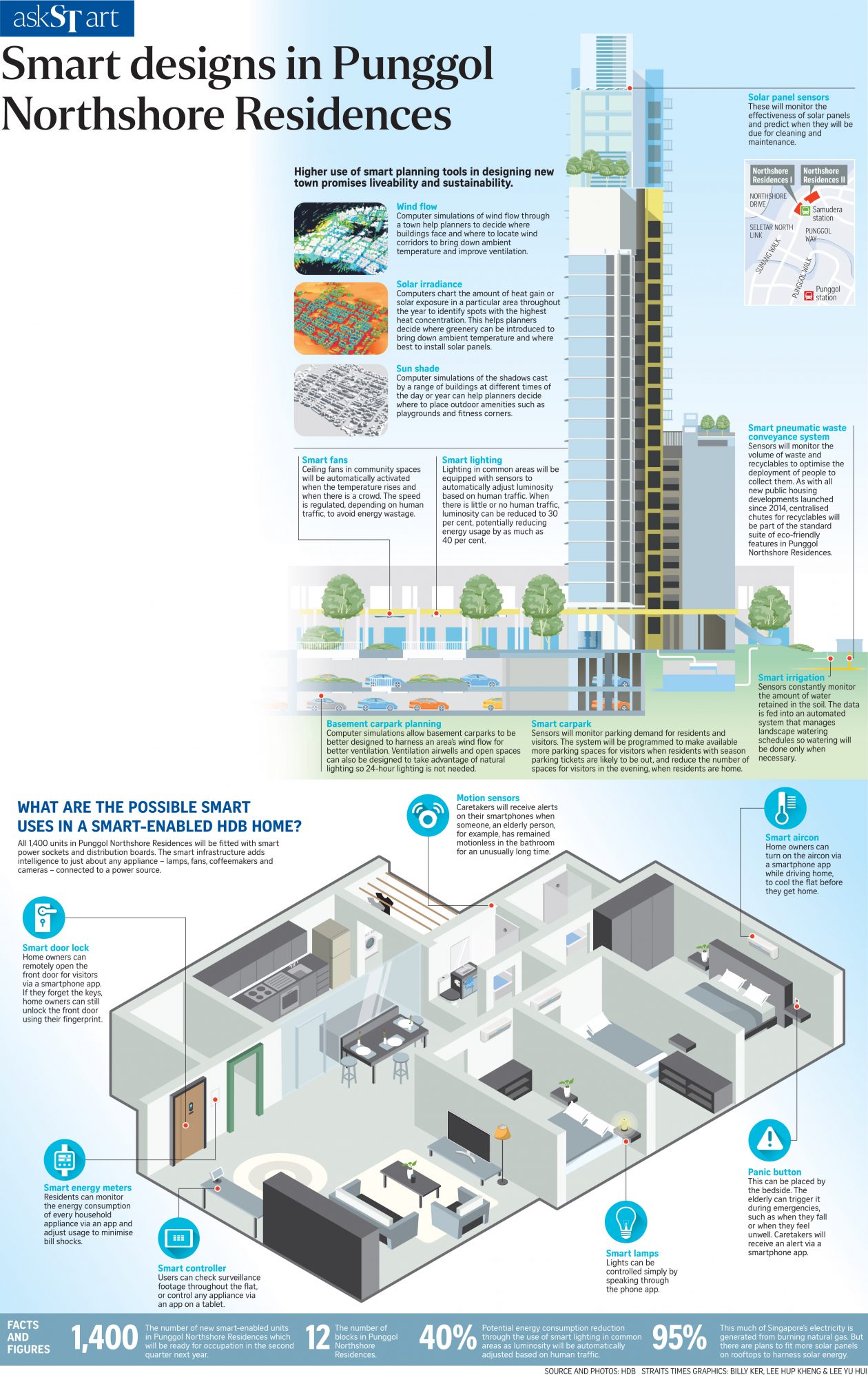Smart Designs in Punggol Northshore Residences

Smart-enabled flats will allow residents to control home appliances through mobile app.
While on the train ride home, imagine talking to the air-conditioning unit in the living room to get it running so the flat will be cool by the time you get home.
Then, a swipe of the finger and the coffee machine is heating up the devil’s brew. Far fetched?
The first smart-enabled public housing estate will be ready to be occupied next year.
While there are devices in the market that can already make everyday home appliances smarter, the 1,400 units in Punggol Northshore Residences will come equipped with the brains of a smart home – smart power sockets and high-tech distribution boards.
The Housing Board (HDB) gave The Straits Times a sneak preview of the standard smart fittings in its first smart town.
The smart infrastructure, which could easily cost a few hundred dollars, means that just about any appliance that is connected to a power source – lamps, fans, coffeemakers and cameras – can be controlled through a mobile application.
The master or mistress of the home will need to only tap on or speak to an app that is likely to accompany most appliances in future.
The HDB said it wants home owners to take advantage of technology, but without having to buy their own smart power plugs and smart gateways, which can cost a few hundred dollars in total.
“We are building smart-enabled homes with built-in features… Such features will allow innovators to develop useful apps that residents can consider using in their homes,” said Dr Johnny Wong, group director of the Building and Research Institute, a research unit under the HDB.
From 2016, trials were conducted in 3,200 flats in Yuhua.
The trials included remote supervision of the elderly for their safety, as well as the monitoring of energy use via smartphone apps.
In designing Punggol Northshore Residences, HDB used lessons gleaned from the trials.
For instance, it learnt that homes must be equipped with smart infrastructure. Otherwise, the need to buy additional hardware – such as smart power plugs and smart gateways – could hamper the adoption of smart technologies.
The high-tech distribution boards in Punggol Northshore Residences will also come embedded with smart energy meters to allow residents to monitor the energy consumption of every household appliance.
In its ongoing effort to build an “urban kampung”, HDB will use human-traffic data collected by motion sensors placed along common corridors in Punggol Northshore Residences to strategically build community networking spaces and amenities where footfall is high.
The data set will be merged with social behavioural survey data to help with better town planning.
Separately, the HDB is also working with telco StarHub and tech firms Sentient.io and IBM to develop an open data sharing platform.
With it, app developers can mine data to create apps, such as those for navigation in a mall or the booking of amenities such as barbecue pits.
Even residents’ lifestyle preferences will be collected for planning community bonding events.
And sensors will also be deployed to analyse the performance of key estate services such as lighting, pumps and waste collection for predictive maintenance.
“And once you get this ecosystem working, it will produce lots of data,” said Dr Wong, who leads HDB’s efforts in pushing for smart and sustainable living in Singapore.
Punggol Northshore Residences will be HDB’s first smart-enabled town, with Tengah, in the western part of Singapore, coming up in the next six years or so.